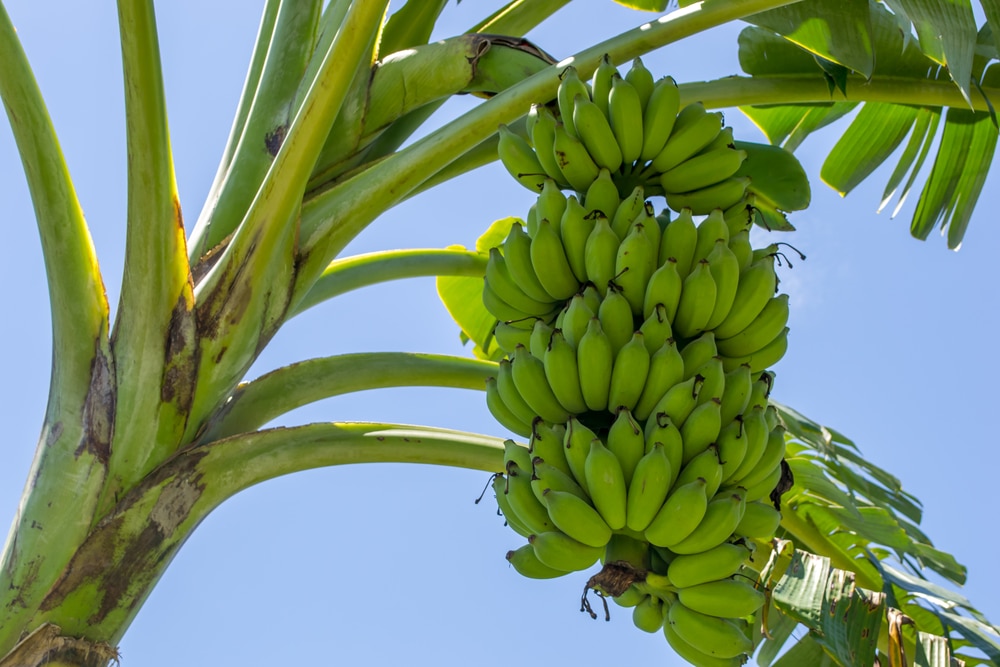Bananas are one of the most popular and widely consumed fruits worldwide, known for their sweet flavor and versatility in culinary applications. However, there is often confusion surrounding the classification of banana plants and their growth habits. In this article, we delve into the anatomy, cultivation, and common misconceptions about banana plants to clarify whether bananas grow on trees or bushes.
I. Introduction
Bananas have long captivated human fascination, with their delicious fruit and distinctive appearance. Despite their ubiquity in supermarkets and kitchens around the world, many people are unaware of the botanical classification of banana plants and how they grow. Understanding the structure and growth habits of banana plants is essential for appreciating their unique biology and cultivation requirements.
II. Anatomy and Growth Habit of Banana Plants
A. Structure of Banana Plants
Banana plants belong to the genus Musa and are classified as herbaceous perennials, meaning they lack woody tissue and have soft stems. The “trunk” of a banana plant is actually a pseudostem composed of tightly packed leaf sheaths, giving the appearance of a tree trunk. At the top of the pseudostem, a large flowering structure called an inflorescence emerges, which eventually develops into clusters of bananas.
B. Growth Habit and Lifecycle
Banana plants exhibit a distinctive growth habit characterized by rapid vegetative growth followed by flowering and fruiting. After the inflorescence emerges, it undergoes a complex process of development, pollination, and fruit maturation. Once the bananas have ripened, the plant typically dies back, but new shoots, known as suckers or pups, emerge from the rhizome to replace the old plant, perpetuating the lifecycle of the banana plant.
C. Reproduction and Fruiting Process
Banana plants reproduce asexually through rhizomes, which are underground stems that produce new shoots. The inflorescence contains both male and female flowers, with the female flowers developing into fruit after pollination. Unlike many fruit trees, which produce seeds within the fruit, bananas develop from unfertilized ovaries, resulting in seedless fruit.
III. Banana Plant Cultivation Methods
A. Commercial Cultivation Practices
Commercial banana cultivation involves large-scale plantations in tropical regions, where bananas thrive in warm, humid climates. Planting, irrigation, fertilization, and pest management are carefully managed to maximize yield and quality. Bananas are typically harvested green and undergo ripening processes before being distributed to markets worldwide.
B. Home Gardening Techniques
Banana plants can also be grown in home gardens, provided the climate is suitable and adequate space is available. Selecting a suitable banana cultivar, preparing the soil, and providing regular water and nutrients are essential for successful cultivation. Home gardeners can enjoy the satisfaction of growing their own bananas and harvesting fresh fruit from their backyard.
C. Environmental Considerations
Banana cultivation can have environmental impacts, including deforestation, soil degradation, and pesticide use. Sustainable practices, such as organic farming methods, agroforestry systems, and biodiversity conservation, can mitigate these impacts and promote the long-term viability of banana cultivation. Additionally, supporting fair trade and environmentally responsible banana production can contribute to positive social and environmental outcomes.
IV. Common Misconceptions About Banana Plants
A. Myth: Bananas Grow on Trees
Contrary to popular belief, bananas do not grow on trees. Instead, banana plants are herbaceous perennials with pseudostems composed of leaf sheaths. The term “banana tree” is a misnomer and inaccurately describes the growth habit of banana plants.
B. Myth: Bananas Are a Type of Palm Tree
While banana plants are sometimes referred to as “banana palms,” they are not true palm trees. Palm trees belong to the family Arecaceae, while banana plants belong to the family Musaceae. Despite their superficial similarities, bananas and palms are distinct botanical entities with different growth habits and reproductive structures.
C. Myth: All Banana Plants Produce Edible Fruit
Not all banana plants produce edible fruit suitable for human consumption. While most cultivated banana varieties are grown for their fruit, some species are cultivated for ornamental purposes or for use in fiber production. Additionally, wild banana species may produce small, inedible fruit with seeds, making them unsuitable for culinary use.
V. Conclusion
Banana plants are fascinating botanical specimens with a rich history and diverse cultural significance. Understanding the anatomy, growth habits, and cultivation practices of banana plants is essential for appreciating their unique biology and ensuring successful cultivation. By dispelling common misconceptions and promoting knowledge about banana plants, we can foster greater appreciation for these versatile and beloved fruits.






More Stories
Is there a lifetime limit on epidural steroid injection?
What is Section 20 of the Motor Accident Insurance Act (Queensland)?
Where to Watch USMNT vs Jamaica National Football Team